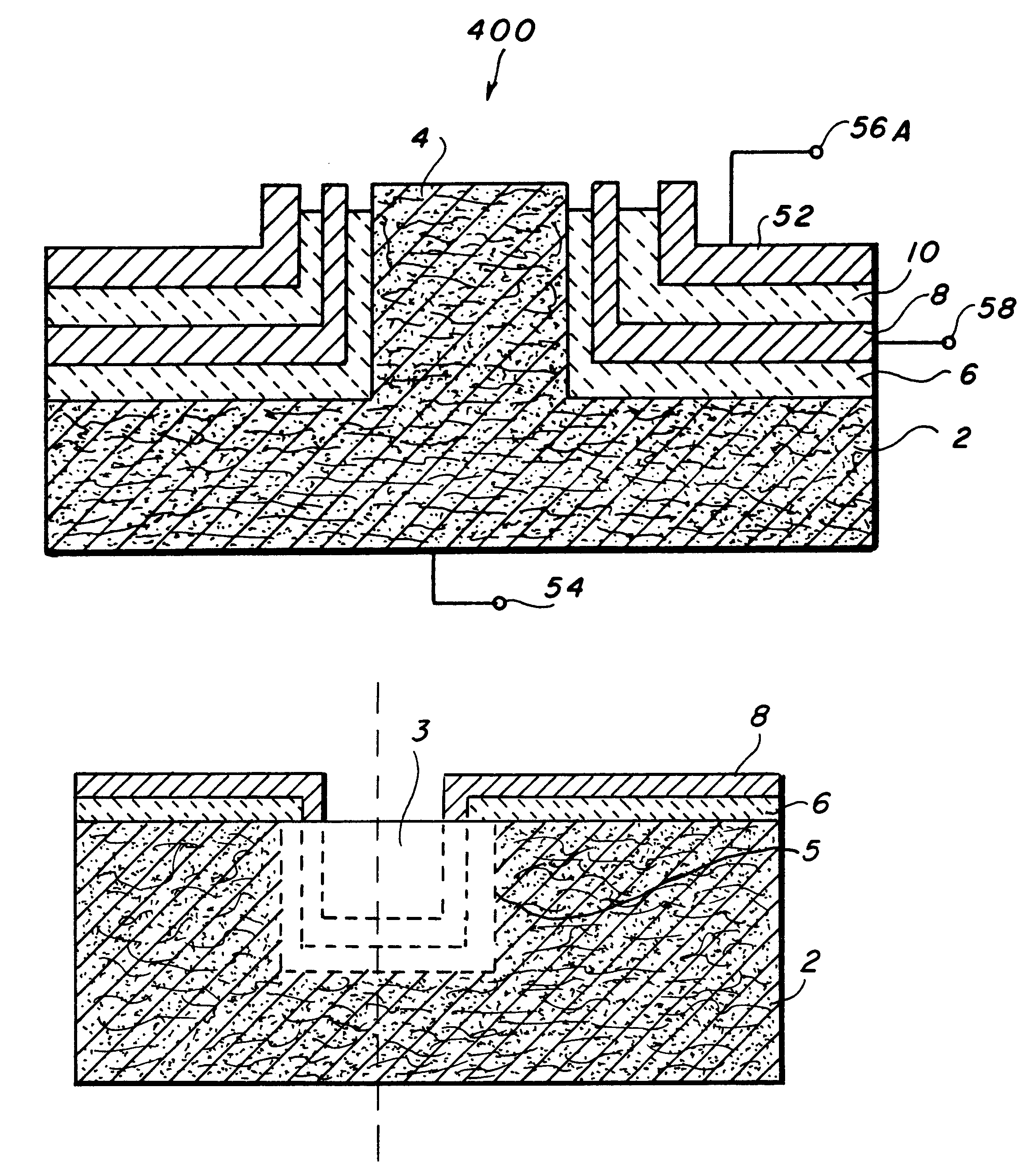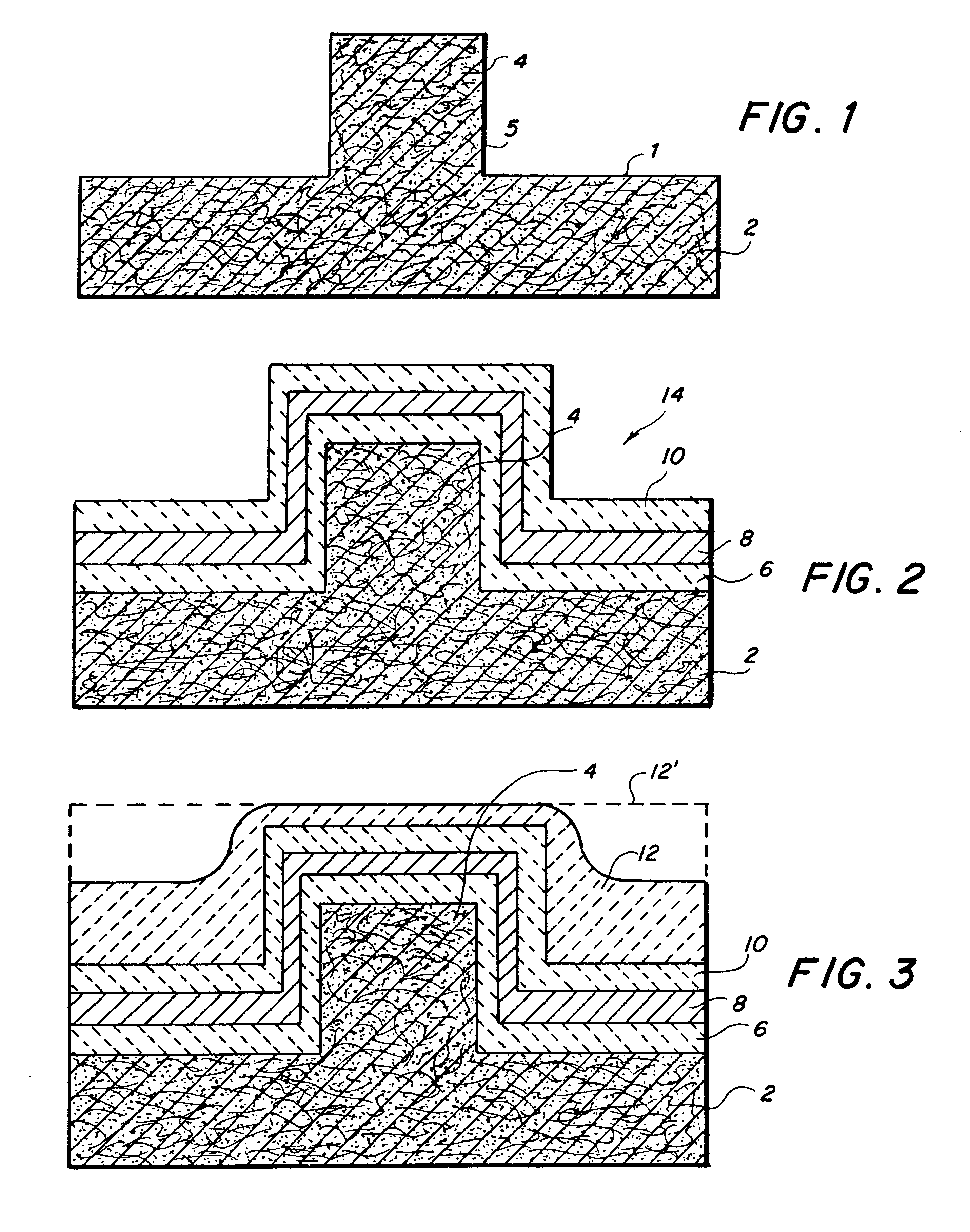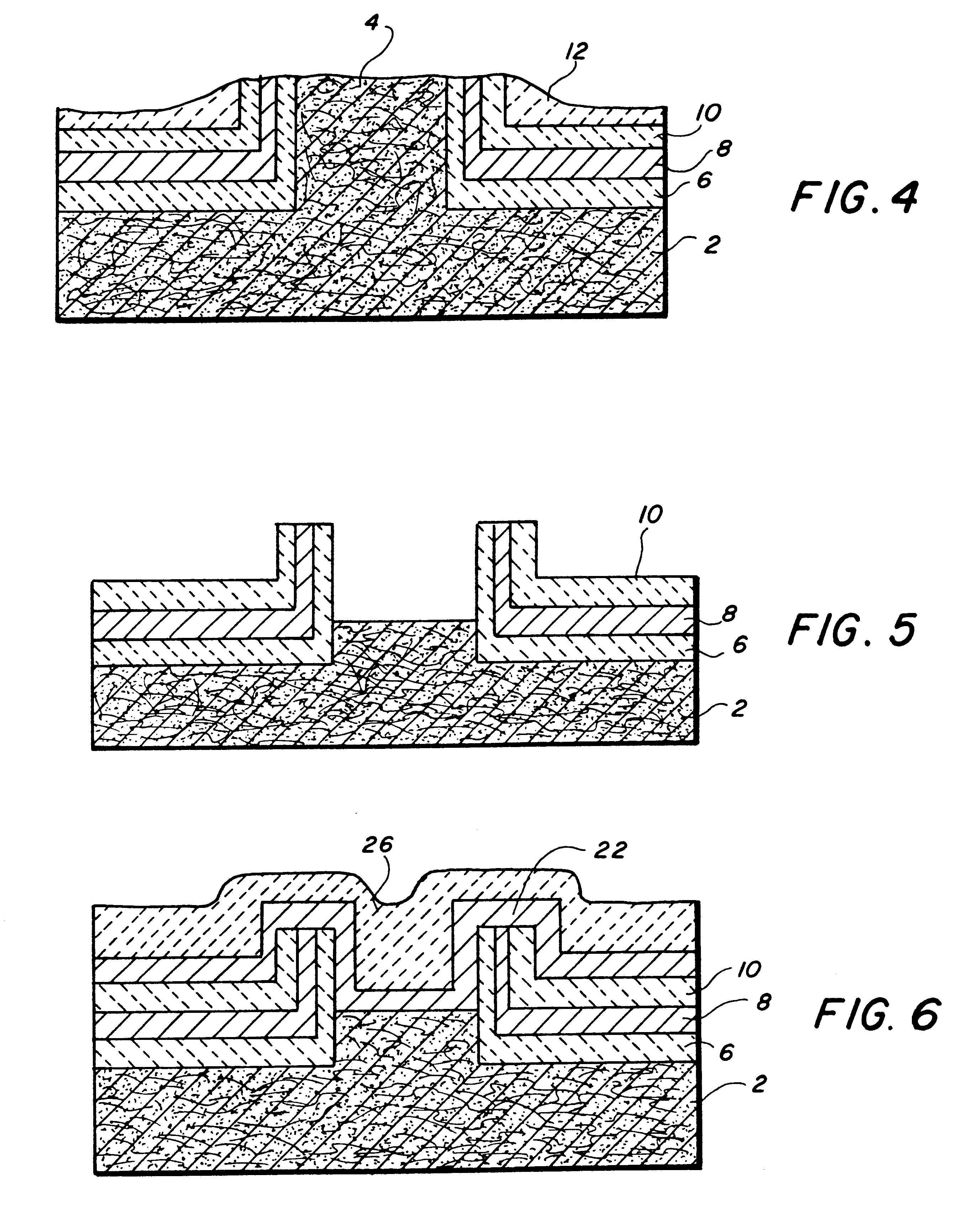Thin-film edge field emitter device
a technology of emitter device and thin film, which is applied in the manufacture of discharge tube main electrodes, electrode systems, electric discharge tube/lamps, etc., can solve the problems of small localized vacuum electron source which emits sufficiently high current for practical applications, difficult to fabricate, and difficult to create feas
- Summary
- Abstract
- Description
- Claims
- Application Information
AI Technical Summary
Benefits of technology
Problems solved by technology
Method used
Image
Examples
example 1
This example is shown in FIG. 18(d) and constitutes a lithium layer sandwiched between two platinum layers. It was manufactured as follows:
(1) The starting work piece consisted of a 10.times.10 array of silicon template structures 10 .mu.m in diameter and 2 .mu.m in height, spaced at 500 .mu.m apart, and centered in a 5.times.5 millimeter (mm) area on a 1.times.1 cm piece of n-type Si(100) overcoated with a 200 .ANG.layer of amorphous silicon. These cylindrical protuberances were fabricated using standard photo-lithographic methods.
(2) The sample was cleaned by 5 minute immersions in warm acetone, 10% buffered HF, H.sub.2 SO.sub.4 / H.sub.2 O.sub.2, 10% buffered HF, and 1% buffered HF. A triple-distilled water rinse was used between each step except before the last HF treatment. the work piece was then mounted on a heater on a manipulator, and placed in a vacuum chamber pumped by a liquid-nitrogen trapped diffusion pump. The base pressure was 9.times.10.sup.-8 Torr. the work piece wa...
example 2
Steps (1) and (2), the procedures were the same as above except for the following: After the sample was cleaned and treated in HF, some indium metal was melted onto the back side of the substrate with a soldering iron to provide a good conducting contact for electrical connection in the later testing stage. The vacuum chamber base pressure was 3.times.10.sub.-8 Torr. The dehydration temperature prior to film deposition was 490.degree. C. for 25 minutes. The deposition temperature was 288.degree. C.
Step (3), the procedures were the same as in step (3) above except that the deposition time for Li was 8 minutes.
Step (4), the procedures were the same as in step (4) above except that the sputtering was done at 2.0 keV starting at the beginning, for 3 hours 30 minutes.
Step (5), the procedures were the same as in step (5) above except that the ion beam assisted etching step was carried out for 15 minutes at a reduced XeF2 pressure of 0.6.times.10-5 Torr.
example 3
Steps (1) and (2), the procedures were the same as above except for the following: The dehydration temperature was 503.degree. C.
Step (3), the procedures were the same as in step (3) above except that only a Pt film was deposited for 16 minutes. Pressure and temperature conditions were the same as in Example 2.
Step (4), the same procedures were used as in Example 2 above except that the sputtering was done for 2 hours 4 minutes.
Step (5), the procedures were the same as in Example 2 above except that the etching duration was 18.0 minutes.
In a preferred embodiment the typical emitter structure has a shape of a hollow cylinder with nanometer (nm) linewidth wall, 2 .mu.m in height and 10 .mu.m in diameter. The cylinder wall consists of two free-standing platinum thin films sandwiching a third thin film of lower work function material. Critical material properties include very low film stress and fine grain size. The latter property allows 10-20 nm radii of curvature to be obtained. Fiel...
PUM
 Login to View More
Login to View More Abstract
Description
Claims
Application Information
 Login to View More
Login to View More - R&D
- Intellectual Property
- Life Sciences
- Materials
- Tech Scout
- Unparalleled Data Quality
- Higher Quality Content
- 60% Fewer Hallucinations
Browse by: Latest US Patents, China's latest patents, Technical Efficacy Thesaurus, Application Domain, Technology Topic, Popular Technical Reports.
© 2025 PatSnap. All rights reserved.Legal|Privacy policy|Modern Slavery Act Transparency Statement|Sitemap|About US| Contact US: help@patsnap.com



